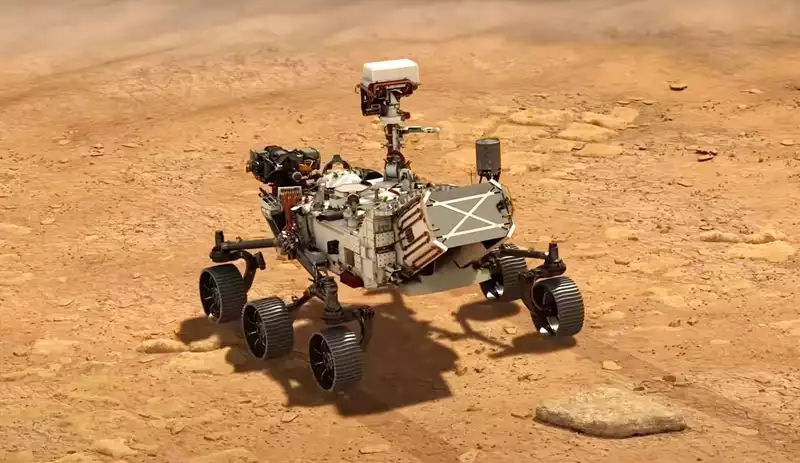You can also be interested in these:
- AMD Zen 3 vs Zen 4: The evolution and revolution
- What is the AMD FidelityFX Super Resolution?
- CES 2022: The year’s most anticipated tech event
- Do solar panels work at night? The anti-solar panels
Everything went as expected for NASA. Yesterday, the Perseverance rover landed successfully as planned on Mars. The mission took off from Earth on July 30, 2020. Months later, the NASA rover landing on Mars was official without any major setbacks.

The rover unfolded from the spacecraft upon reaching orbit of Mars and began its descent for a successful landing. Being about 12 kilometers high, it deployed what Nasa called “the Sky Crane” to descend gently into the Jezero Crater. The moment it reached meters above the surface, it activated the thrusters and made the landfall.
A successful NASA rover landing on Mars
Perseverance is the fifth rover sent by NASA to Mars, and while NASA is already experienced in this, landing moments are always uncertain. Entering the atmosphere and managing to place a rover millions of kilometers away is not an easy task.
As soon as it landed on Mars, the rover sent its first image from the Martian surface. This first image is usually tiny and helps NASA verify that the rover is safe and sound. In the image, blurred by the Martian dust in front of the camera, shadow of the rover can be seen on the surface.
Perseverance became the third mission to arrive on Mars. In a historic and unprecedented milestone the ship managed to arrive in less than ten days to the planet. The first mission that accomplished this took off from the United Arab Emirates, followed by China.
The purpose of this vehicle on the surface of Mars
While the landing on Mars was successful, the truth is that the Persevernace mission is just beginning. Once on the Martian surface it is time to start science. The rover is equipped with a total of seven scientific instruments and many cameras on board that will allow it to collect and analyze samples of Martian regolith and other environmental elements.
In addition to the rover itself, there is also a drone called Ingenuity. This is the first drone/helicopter to reach the Red Planet. Its mission will be to explore from above those areas where the rover cannot reach.
The Jezero Crater is expected to contain traces water in its interior and, consequently, possible remains of life from the past. Part of Perseverance’s mission is to scan this place for these signs. Additionally, Perseverance will also analyze the Martian environment to serve as a starting point for future manned missions to Mars.
NASA has a more ambitious plan with Perseverance in the long-term. This is actually only phase 1 out of 3 missions to Mars. The idea is bringing samples from the planet back to Earth. Perseverance will collect the samples, a second mission will take them out of the planet, and a third mission by the end of the decade will bring them back to Earth. Nobody said space exploration was easy.
More stories like this
- AMD Zen 3 vs Zen 4: The evolution and revolution
- What is the AMD FidelityFX Super Resolution?
- CES 2022: The year’s most anticipated tech event
- Do solar panels work at night? The anti-solar panels
- Graphene Aerogel: the lightest material on earth
- Greenhouse solar panels for a self-sustained crop system